Nazis refer to members of the German National Socialist Party that existed between the 1920s and 1945, which became the government of Germany in 1933 under the dictatorship of Adolf Hitler who led the country into the events of World War II. The notoriety surrounding the Nazi party is principally due to its ruthless suppression of occupied territories during the War and in particular its policy of racial superiority that resulted in the wholesale slaughter of six million Jewish people and other groups in concentration camps (The Holocaust). Adolf Hitler has become regarded as the epitome of evil.
The Nazi Party became so notorious it has since been outlawed in Germany, although it has featured a revival of popularity in many parts of the world among the rise in right wing extremism in the late 2010s.
This essay Nazis in Fantastic Cinema is not concerned with the historical reality of Nazism or the events of World War II – there are ample online resources that analyse all historical aspects of the era far more extensively than can be summarised here. Rather this topic concerns what Nazis have become in popular culture.
Nazis have become synonymous with ultimate evil. To place a villain in an S.S. uniform and/or give them a past as a Nazi is to create someone that audiences automatically associates with great evil and historical atrocity. There have been a great many genre films featuring Nazi villains, super-villains and mad scientists and another whole sub-genre that places Nazis alongside supernatural menaces like vampires and zombies.
Also popular are a series of Alternate History films based around what might have happened if the Nazis had won World War II. The 2000s have seen the rise of what might be called the Gonzo Nazi film in which Nazis are combined with madcap elements such as UFOs and moonbases.
Depictions of Nazis During World War II
There were a handful of genre examples featuring Nazis made during the actual Wartime era. These include Invisible Agent (1942) with the Invisible Man fighting Nazis; The Mysterious Doctor (1942) with a Nazi fifth column hiding inside a haunted mine in England; the East Side Kids comedy Ghosts on the Loose (1943) with Bela Lugosi as a Nazi agent who runs his operations from inside a haunted house; and Tarzan Triumphs (1943) with Johnny Weissmuller’s Tarzan fighting Nazis in the jungle. In the majority of these, Nazis are seen as no more than buffoonish figures who are frequently defeated by their own petty pomposity. The caricature of the cold and calculatingly evil S.S. officer would not develop for another two decades.
Probably the most notable genre efforts of the Wartime era were to be found in the short propaganda cartoons of the period in which various familiar animated characters would face Hitler in comic exploits – notedly Daffy – The Commando (1943), Donald Duck in Der Fuhrer’s Face (1943) and Bugs Bunny in Herr Meets Mare (1945). Various of the Superman and Popeye cartoons of the era had them fighting against German soldiers.
One fascinating effort was Arch Oboler’s Strange Holiday (1945) where Claude Rains returns from holiday to find a Nazi fifth column has taken over the entire USA. This was made back in 1940 before the US had even entered the War but was shelved for political reasons and not released until after the war ended.
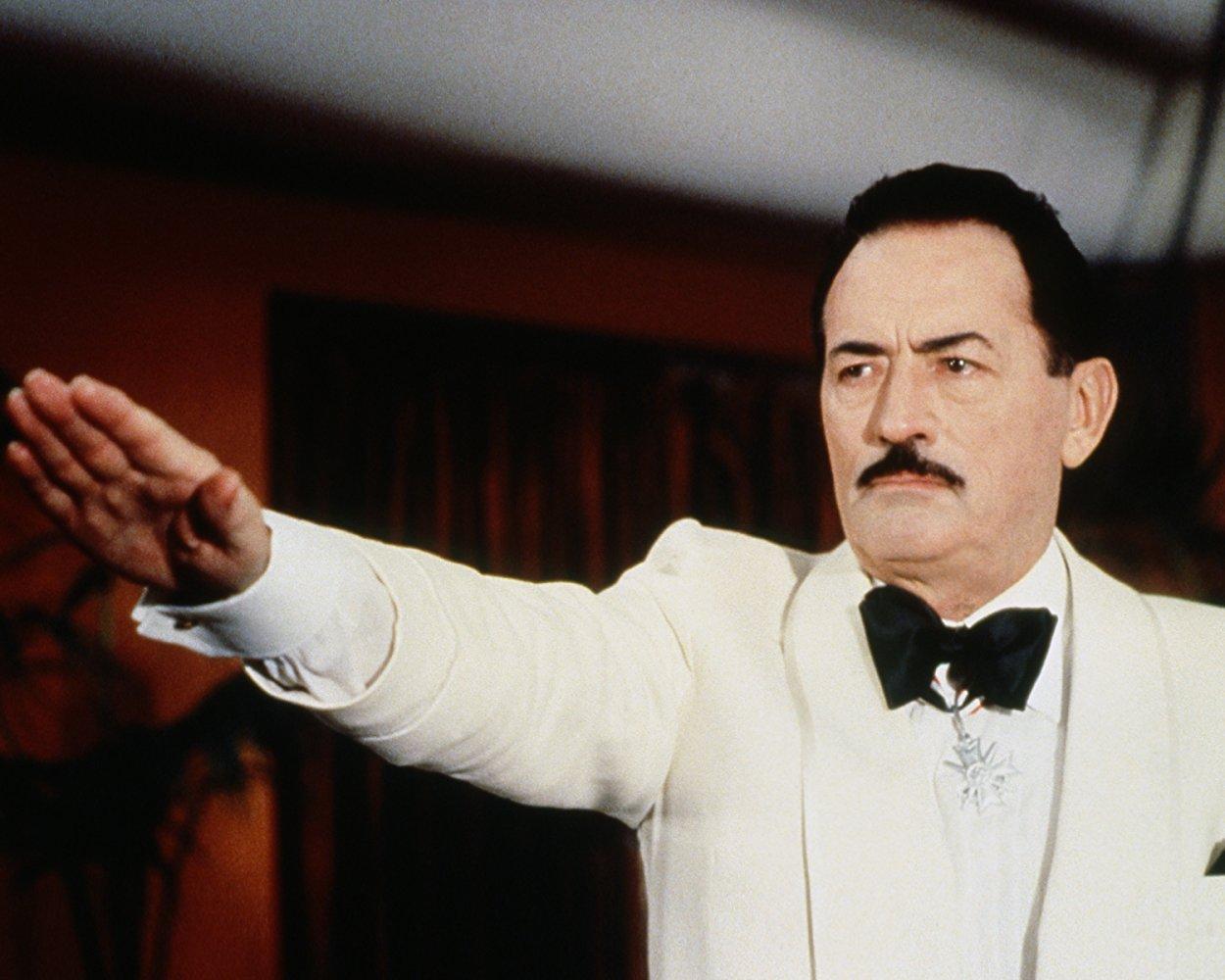
Made following the War was Mark of the Gorilla (1951) was a jungle adventure that featured Nazis dressed as apes in order to steal a treasure. The British Counterblast (1948) had a former Nazi bacteriologist posing as a research scientist to create a vaccine before unleashing a deadly virus, while Dick Barton: Special Agent (1948) featured a Nazi plot to poison England’s water supply. In The Whip Hand (1951), a former Nazi scientist aids a Communist fifth column planning a biowarfare attack on the USA, while Red Planet Mars (1952) has a Nazi scientist aiding a Communist plan to fake messages from God on Mars. (These latter two featuring Nazi and Communists collaborating seem made oblivious to the fact the two were fiercely ideologically opposed in real life).
A Game of Death (1945) and Run for the Sun (1956) are both remakes of The Most Dangerous Game (1932) in which people are forced to survive with their bare hands against an armed hunter. The original features a mad Russian aristocrat that likes to hunt human game but in these versions he is topically rewritten as a Nazi.
Nazi Mad Scientists and Villains
Stories of true-life Nazi fascination with the occult and of inhumane experiments conducted in the concentration camps have made them a natural for exploitation in genre material. There have been a plethora of films featuring Nazi villains, super-villains and mad scientists.
Nazi mad scientists started to appear in the late 1950s with the likes of She Demons (1958) featuring Nazi animal hybrid experiments; The Yesterday Machine (1963) about a Nazi time machine; The Flesh Eaters (1964) about a former Nazi scientist creating flesh-eating slugs; The Frozen Dead (1966) about unthawed Nazi soldiers; The Spy in the Green Hat (1967) about a world domination scheme in which a former Nazi scientist plans to divert the weather; a super-soldier program in S.S. Doomtrooper (2006); and the revival of Nazi experiments to create giant animals in the present-day in Spider in the Attic (2021).
One of the recurrent themes has been the idea of resurrecting Hitler (or at least his severed head) as we see in the Z movie classic They Saved Hitler’s Brain (1964), Flesh Feast (1970) with Veronica Lake as a mad scientist, while The Order of the Black Eagle (1987) and The New Avengers episode The Eagle’s Nest (1976) concern attempts to revive a cryogenically frozen Hitler. The Anschluss ’77 (1977) episode of Wonder Woman/The New Original Wonder Woman featured a clone of Hitler. Cryogenically frozen Nazis appear in The Frozen Dead (1966), Nick Fury, Agent of Shield (1998), Yoga Hosers (2016) and the finale of the tv series Psychoville (2009-11)
The Nazi villain gained mainstream popularity in the 1970s. This was fueled by real-world stories of Nazis hiding out in Argentina and the high-profile capture of Adolf Eichmann. This filtered through into big-budget thrillers of the era like Marathon Man (1976), The Eagle Has Landed (1975), Bear Island (1979), The Formula (1980), Eye of the Needle (1981) and The Holcroft Covenant (1985).
The most famous genre example among these was The Boys From Brazil (1978) in which Gregory Peck plays real-life Nazi mad scientist Josef Mengele who has managed to clone 94 copies of Hitler in an effort to recreate the Fuhrer. Mengele has since become portrayed as a mad scientist in other works such as Werewolves of the Third Reich (2017) and Stay Out of the Fucking Attic (2020) where he is still alive conducting experiments in suburban USA.
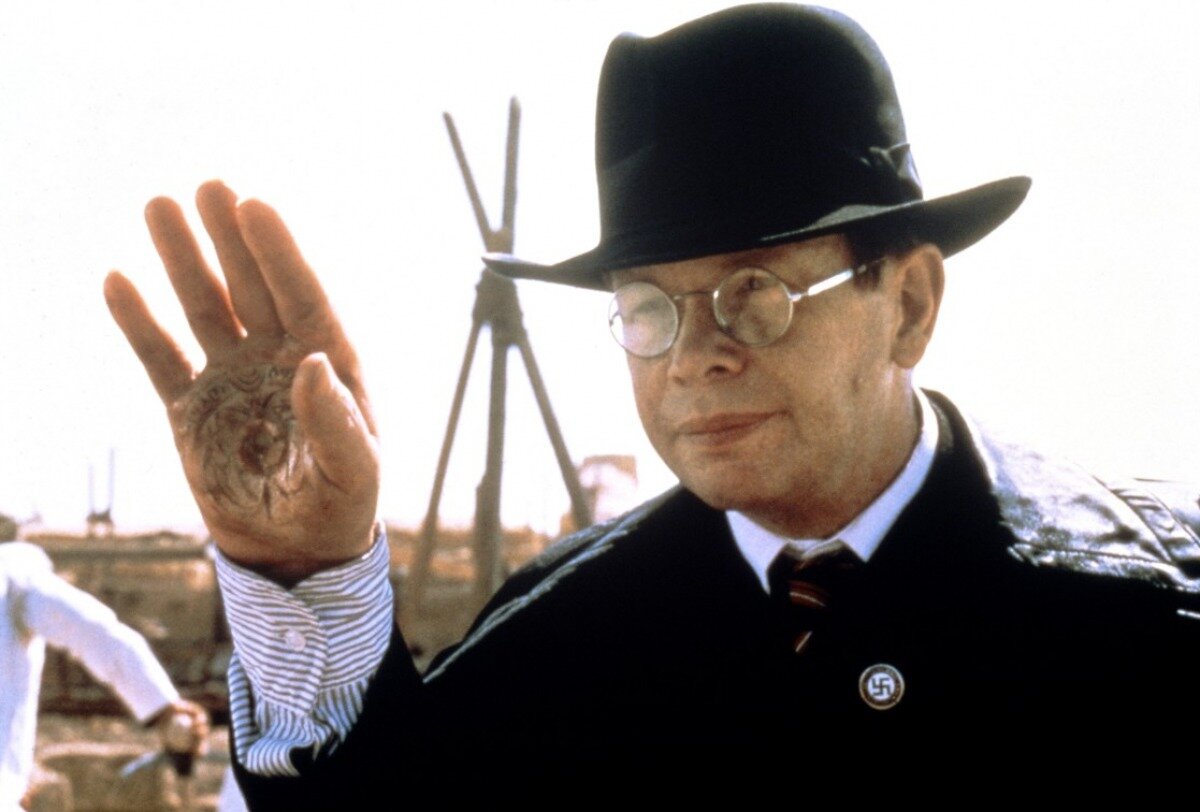
Nazis became comic caricatures by about the time of tv’s Hogan’s Heroes (1965-71) and later tv’s ‘Allo ‘Allo (1982-92). More comic-bookish and one-dimensional Nazi villains feature in Raiders of the Lost Ark (1981), Indiana Jones and the Last Crusade (1989), Rocketeer (1991) and Indiana Jones and the Dial of Destiny (2023).
In the completely ridiculous arena, Under the Rainbow (1981) features dwarf Nazi spies invading the set during the shooting of The Wizard of Oz (1939). The animated Valiant (2005), a talking animals film about Wartime carrier pigeons, features Nazi villains in the form of talking falcons, while The Spirit (2008) casts Samuel L. Jackson as a Nazi villain. The Hitler’s Last Secret (1978) episode of The Tomorrow People revealed that Hitler was actually an intergalactic alien dictator.
The first season of the tv series Wonder Woman/The New Original Wonder Woman (1975-9) was set during the World War II era and regularly featured Wonder Woman (Lynda Carter) against Nazi villains and mad scientists. The Mexican wrestlers Santo and Blue Demon travel to Atlantis to stop a Nazi scientist with an atomic bomb in Santo vs Blue Demon in Atlantis (1970). Justice Society: World War II (2021) is also set during World War II and features an early superhero team formed by President Roosevelt to fight the Nazi menace, while episodes of Legends of Tomorrow (2016-22) also feature the time-travelling team fighting Nazis. Freaks Out (2021) features a troupe of Jewish circus performers who have superpowers as they run afoul of the Nazis.
The first Nazi super-villains appeared in the Lynda Carter Wonder Woman with Baroness Paula von Gunther in the episode Wonder Woman Meets Baroness von Gunther (1977) and the title character in Fausta The Nazi Wonder Woman (1977). Subsequent Nazi super-villains include the Red Skull in Captain America: The First Avenger (2011), Klaus Schmidt/Sebastian Shaw in X: First Class (2011) and Stormfront in tv’s The Boys (2019- ). Justice League: Crisis on Infinite Earths Part Three (2024) features multiverse-hopping Nazis armed with the weaponry of Batman villains.
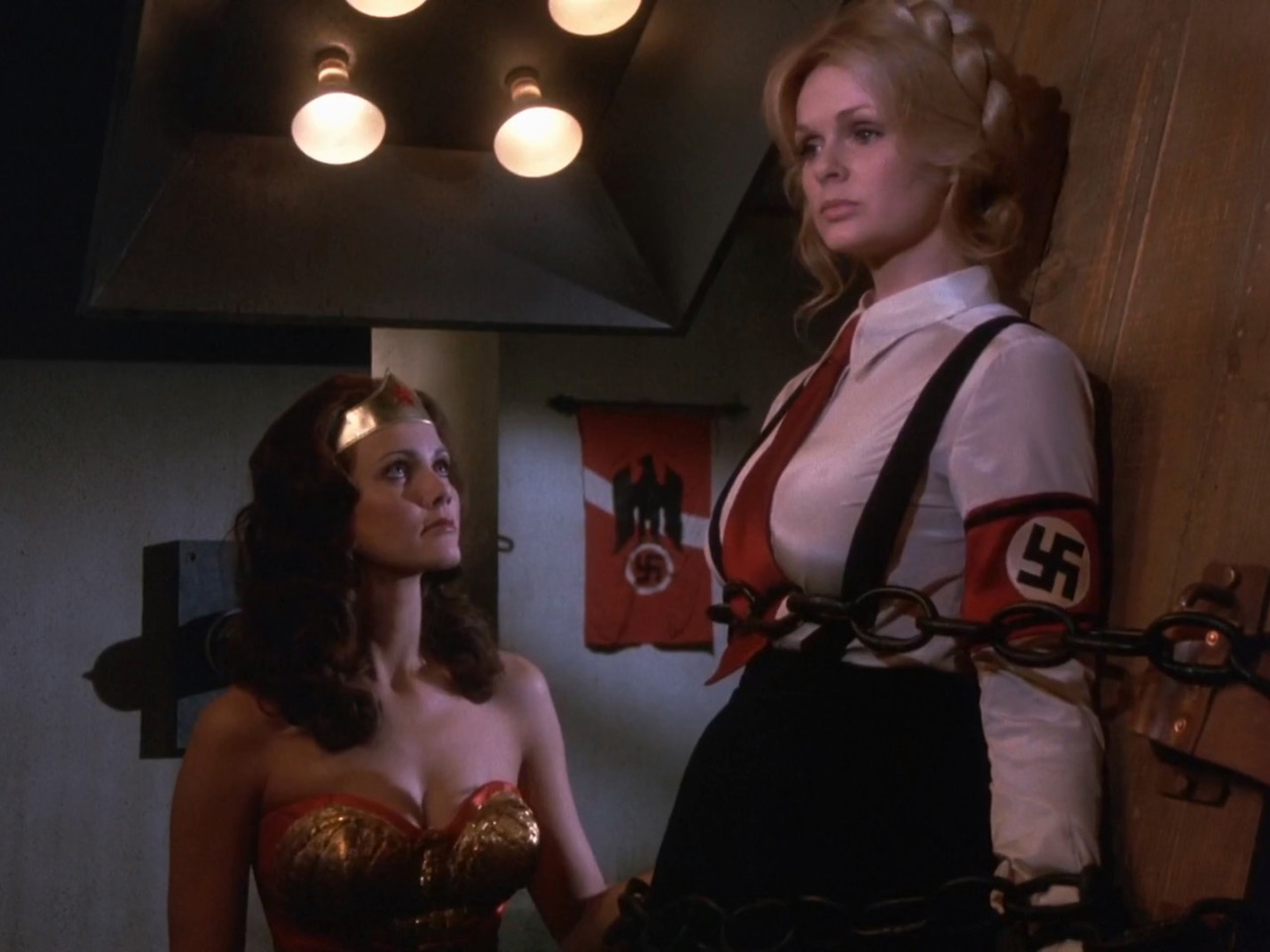
Although no overt connection was ever made, the Nazis served as inspiration for Terry Nation’s creation of The Daleks, the cold inhuman beings in machine casings who exterminate all in their way that became the most famous nemeses of tv’s Doctor Who (1963-89, 2005- ). The connection is at its most direct in the episode Genesis of the Daleks (1975), an origin story that shows how the Daleks are created as genetically superior beings during the midst of a race war.
The 2000s seem to be the point when the Nazi villain died off due to the simple fact that anyone surviving for the sixty plus years after World War II would be very old by that point. There were a few films about Nazi war criminals in hiding and usually reminiscing about and relishing torturing more in the The Silent Scream (1980) episode of the tv anthology series Hammer House of Horror, the disturbing In a Glass Cage (1986) and Apt Pupil (1998)
A few remaining very old Nazis still remain in the likes of The Crimson Rivers (2000), The Sum of All Fears (2002), Frontier(s) (2007) and The Girl with the Dragon Tattoo (2009), as well as the Doctor Who episode Silver Nemesis (1989). There have been a sporadic number of Nazi villains that still turn up but usually in adventures that take place in the past such as in Hannibal Rising (2007), Captain America: The First Avenger (2011) and X: First Class (2011). So far, we have yet to have any depictions of villains from among the neo-Nazi revival of the late 2010s.
The 1970s also saw the rise of the so-called Nazisploilation genre with the infamous Ilsa, She Wolf of the SS (1974) offering a catalogue of tortures and softcore interludes set in a concentration camp as lorded over by sadistic, hyper-sexed commandant Dyanne Thorne. This was followed by a spate of sequels and other morally reprehensible films offering similar sado-sexual catalogues of Nazi tortures that includes titles such as SS Hell Camp (1977), The Gestapo’s Last Orgy (1977), Love Train for the SS (1977), Private House of the SS/SS Girls (1977), The Beast in Heat (1977) and Nathalie: Escape from Hell (1978), among others. There is a documentary about the phenomenon with Fascism on a Thread: The Strange Story of Nazisploitation Cinema (2019).
Nazi Zombies
The 1970s also gave us the first Nazi zombie film with Shock Waves (1977) featuring a troupe of undead Stormtroopers on a tropical island. The Nazi zombie genre produced a number of sporadic variations over the next few years with the cheap likes of Night of the Zombies (1981), Oasis of the Zombies (1981) and Zombies’ Lake (1981).
Hell Hunters (1987) had Nazi mad scientist George Lazenby creating zombies in the jungle, while a zombie in an S.S. uniform turns up in Devil Story (1986). The most bizarre of these was Hard Rock Zombies (1985) about a rock band that enact a spell that turns them and Nazis who inhabit small town California, including a very much alive Adolf Hitler, a Nazi dwarf and a werewolf granny, into zombies.
The Nazi zombie film saw a revival in the 2000s/10s with the likes of the quite good Outpost (2007) and sequels; the Norwegian splatter comedy Dead Snow (2009) and sequel; the Finnish War of the Dead (2011); Bunker of the Dead (2015), which included a zombified Hitler; and Zombie Massacre 2: Reich of the Dead (2015).
Nazi zombies also briefly turn up in Rob Zombie’s The Haunted World of El Superbeasto (2009). Mutation (1999) concerns the present-day discovery of a Nazi formula that creates zombies and plentiful gory meltdowns, while Blade: The Iron Cross (2020) features a Nazi mad scientist conducting zombie experiments.
Nazis and The Supernatural
The first film to combine Nazis with supernatural elements was the vampire film Nightmare in Blood (1977), which gave its vampire a background as a Nazi mad scientist and had the vampire hunter a Jewish concentration camp survivor. Soon after came Death Ship (1980) about a ghost ship haunted by Nazi atrocities performed aboard it.
Although not a success at the time, The Keep (1983) proved to highly influential. It gave us the fascinating idea of Nazis as nominal heroes up against an ancient monster imprisoned in a Mediaeval fort in Romania. There have been a number of films that have borrowed from The Keep featuring Nazis in a fortified locales combatting occult and other supernatural forces with The Bunker (2001), The Devil’s Rock (2011), Panzer Chocolate (2013) and sort of in Ghosts of War (2020) with G.I.’s dealing with ghosts killed by Germans in a French chateau.
Nazi vampires feature in Frostbite (2006), Town Creek (2008), Bloodrayne: The Third Reich (2011) and Blubberella (2011), while vampires turned up aboard a German ship in Blood Vessel (2019) and aboard a U-boat in the comedic Subferatu (2020). T.M.A. (2009), The Unborn (2009) and Ouija: Origin of Evil (2016) feature places haunted by the ghosts of Nazi atrocities. A Nazi werewolf features in Iron Wolf (2013), while the Creepshow episode Bad Wolf Down (2019) has G.I.’s defending themselves from Nazis with a werewolf.
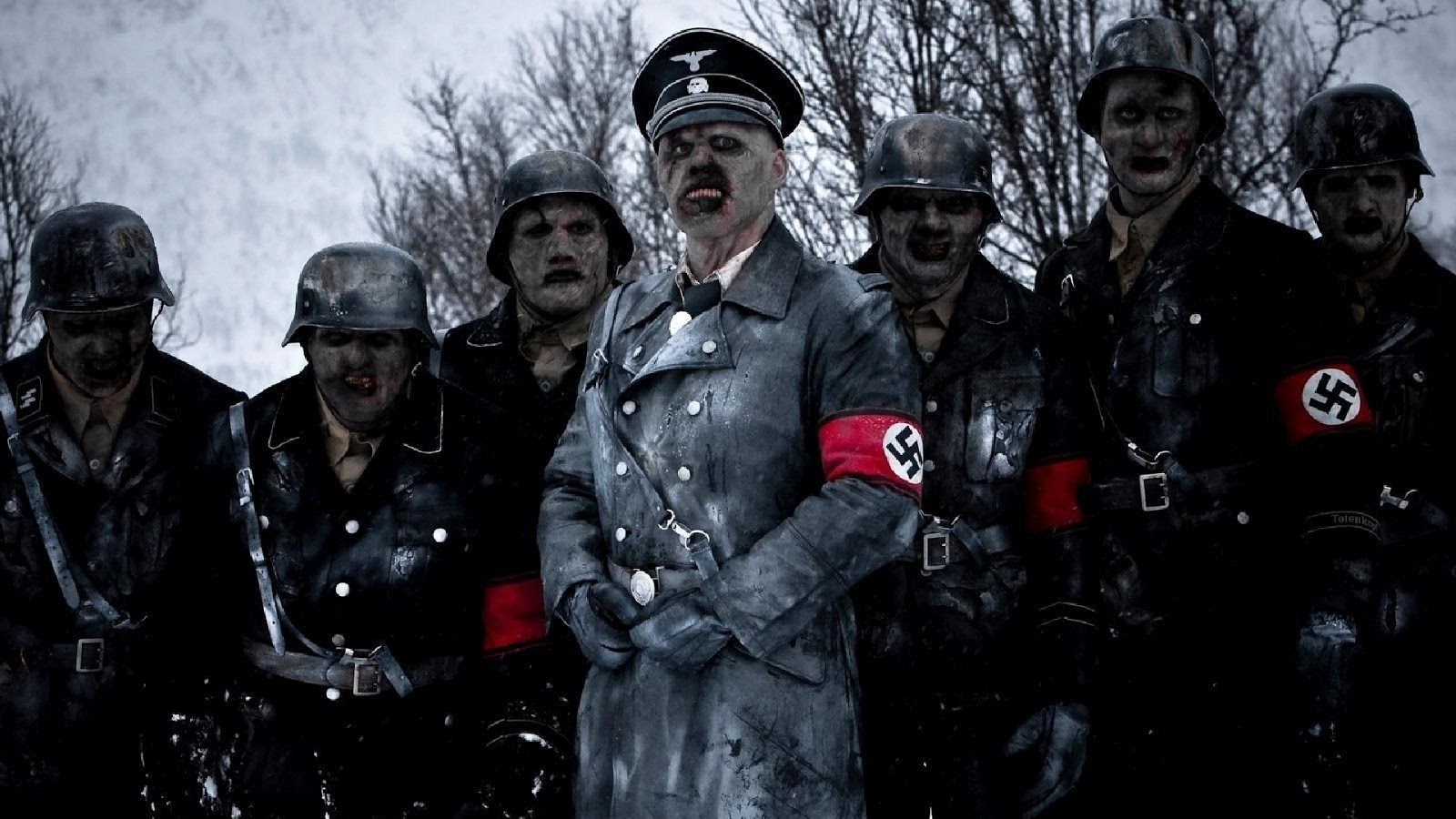
Urotsukidoji II: Legend of the Demon Womb (1989) and Hellboy (2004) features Nazi attempts to conjure occult forces. Puppetmaster III: Toulon’s Revenge (1991) and several of the subsequent sequels pits the Puppetmaster and his living toys against Nazis who are seeking to create miniature stormtroopers, while The Toymaker (2017) features Nazis hunting an occult book that can bring toys to life. Bulletproof Monk (2003) features Nazis seeking Tibetan scrolls of immortality. Backtrack: Nazi Regression (2014) features a man seeking details from his past life as an SS officer.
Entirely in a category of its own is Hanussen (1988) about the real-life figure of Erik-Jan Hanussen, a Jewish clairvoyant and psychic who had remarkable success in Germany during the Nazi era. Incarnated in an excellent performance from Klaus-Maria Brandauer, the film sees Hanussen’s clairvoyant and hypnotic abilities as real.
Nazi Rule Alternate History
Also popular has been the Alternate History theme in which Nazis win World War II. This was first shown in the remarkable It Happened Here (1965), which depicts in documentary-like fashion England under Nazi rule.
We have seen subsequent variations on this in such works as the British mini-series An Englishman’s Castle (1978), another depiction of England under Nazi rule; Philadelphia Experiment II (1993), which offered a glimpse of a Nazi-ruled USA; Fatherland (1994) depicting a Nazi empire in the 1960s and one S.S. officer’s discovery of The Holocaust, which has been covered up; SS-GB (2017), another excellent depiction of England under Nazi rule; and the tv series The Man in the High Castle (2015-9) showing a defeated USA divided between Nazi and Japanese rule.
The anime Jin-Roh: The Wolf Brigade (1998) is set in an alternate history of a Nazi-ruled Japan. Sky Captain and the World of Tomorrow (2004) is set inside an imagined 1930s of Raygun Gothic and features the battle against a Nazi super-villain. Timecop: The Berlin Decision (2003) features temporal police trying to stop a time traveller from assassinating Hitler, while a similar plot features in the Doctor Who episode Let’s Kill Hitler (2011). Danger! Danger! (2021) features the attempts to use a time machine to go back and prevent the Third Reich collapsing.
The animated Hitler’s Folly (2016) explores what might have happened if Hitler had instead followed his career as an artist and become employed by Disney Studios. The animated Freedom Fighters – The Ray (2018) was a superhero film set in a Nazi rule alternate history. Jackboots on Whitehall (2010) was a puppet film that imagines a Nazi invasion of England.
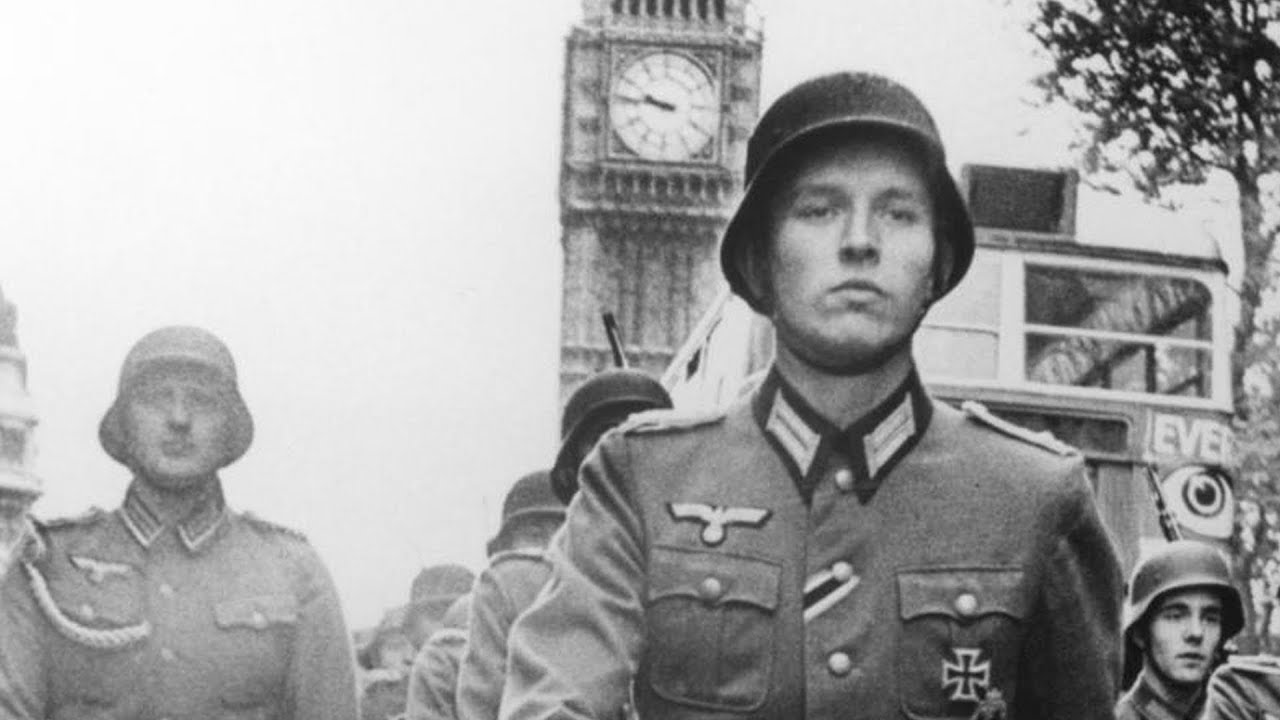
In the The Twilight Zone episode He’s Alive (1963), Hitler becomes an invisible companion advising Neo-Nazi Dennis Hopper, while in The Empty Mirror (1997) a still-alive Adolf Hitler reminisces on his life. The German-made Look Who’s Back (2015) has Adolf Hitler inexplicably transported to the present-day and setting out gain control where he ends up becoming a social media sensation. In the Red Dwarf episode Cured (2017), the crew comes across an asylum where various tyrants of history including Hitler have been cured of their murderous impulses.
In the Star Trek episode Patterns of Force (1968), The Enterprise crew discover that a history professor has recreated Nazi Germany on an alien planet with himself as the Fuhrer.
The Plot Against America (2020) is an alternate history that does not concern itself with Nazi rule per se but features a timeline where Nazi sympathiser Charles Lindbergh comes to power and refuses to drag the US into the War in Europe, while normalising relationships with Nazi Germany, while C.S.A.: The Confederate States of America (2004) also shows a USA where no Civil War occurred and slavery remains in effect in the present where the government maintains friendly relations with Nazi Germany.
Brief mention can be made here of Nazis featuring in time travel stories. The X Files episode Triangle (1998) features Mulder (David Duchovny) temporally displaced aboard a British ship in the Bermuda Triangle in 1939 as it is hijacked by Nazis.
The Gonzo Nazi Film
There should also be mention made of what could be termed the Gonzo Nazi film, combining Nazis with elements of the entirely absurd, including examples such as:-
– An American Werewolf in London (1981) containing a dream sequence with Nazi werewolves, as well as Rob Zombie’s spoof trailer Werewolf Women of the S.S. in Grindhouse (2007)
– Zone Troopers (1986) with GIs and Nazis encountering a crashed UFO behind enemy lines
– Blubberella (2011), an incredibly bad taste parody from Uwe Boll (who also plays Hitler) with a plus-size heroine fighting Nazi vampires
– The Diary of Anne Frankenstein episode of Chillerama (2011) combining Hitler, Anne Frank’s diary and the Frankenstein monster
– Dead Ball (2011), a Japanese splatter film about a deadly baseball tournament inside a prison ruled by a Japanese Nazi warden
– Iron Sky (2012) with Nazis surviving in a moonbase flying fleets of UFOs and spacegoing Zeppelins to invade Earth, and the sequel Iron Sky: The Coming Race (2018), which added a Hollow Earth and Nazi lizard people (including a dinosaur-riding lizard person Hitler) to the mix
– The H is for Hydro-Electric Diffusion episode of The ABCs of Death (2012), a furry fandom interpretation of a WWII adventure
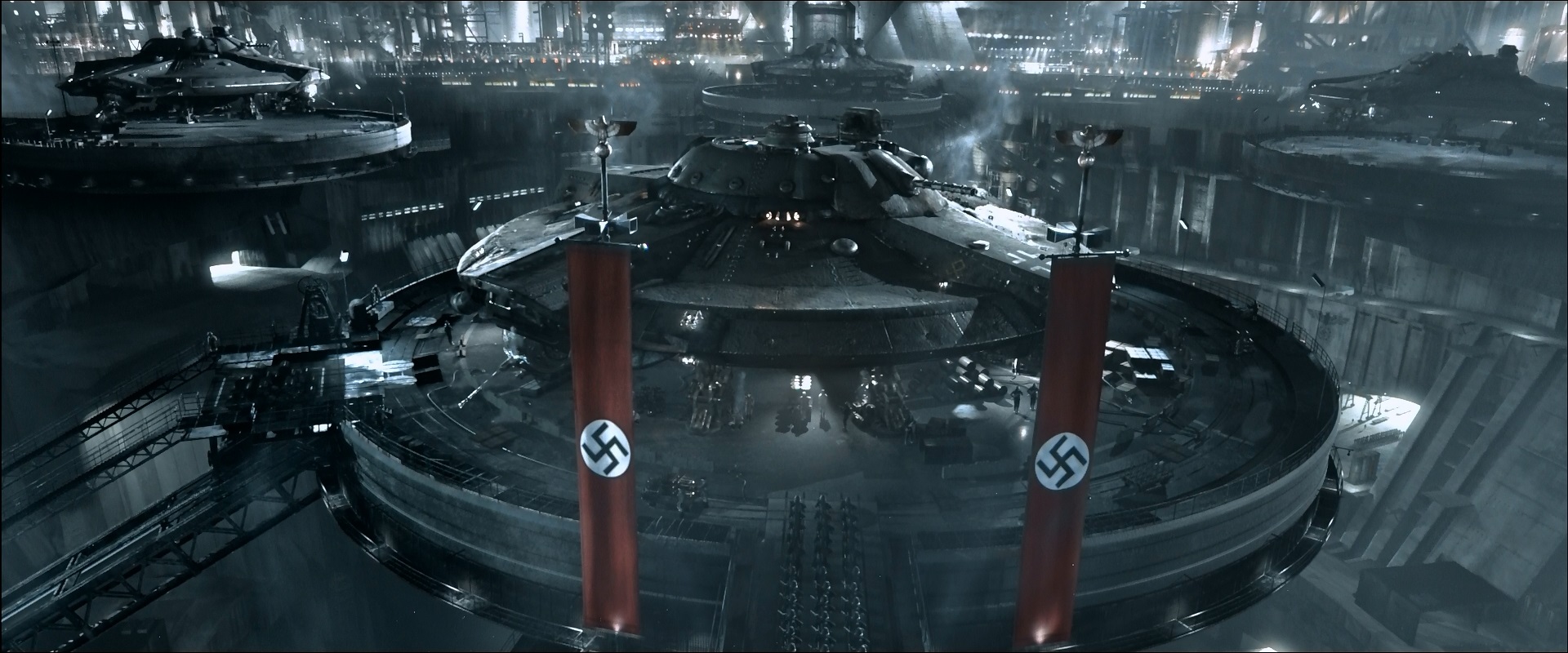
– Nazis at the Center of the Earth (2012) with Nazis, UFOs and the head of a revived Adolf Hitler atop a cyborg body
– The Troma film Teenape Vs. The Monster Nazi Apocalypse (2012) wherein the title half-man, half-ape is part of a team fighting to prevent someone resurrecting Hitler from a vial of his DNA
– The 25th Reich (2012) involving UFOs, time travel and a Nazi ruled future
– Frankenstein’s Army (2013) where a Nazi scientist creates a plethora of hybrids and deformed creations
– Holocaust Cannibal (2014) featuring topless Nazi women crashed in the jungle fighting off cannibals, a giant spider and a Bigfoot
– Kung Fury (2015) where a kung fu adept cop from the 1980s travels back in time to kill Adolf Hitler who has become the Kung Fuhrer
– Sharkenstein (2016) with a Nazi scientist building a patchwork shark with the Frankenstein monster’s brain placed inside and making plans for a shark that has Hitler’s brain
– Yoga Hosers (2016) with miniature cloned Nazis made out of bratwurst
– Werewolves of the Third Reich (2017) with Dr Mengele attempting to breed Nazi werewolves
– The Man Who Killed Hitler and Then The Bigfoot (2018) where the titular assassin (Sam Elliott) tells his life story and how he killed both
– Overlord (2018) and The Asylum’s mockbuster copy Nazi Overlord (2018) about GIs behind enemy lines encountering Nazi mad science experiments
– the Ghanan-made African Kung-Fu Nazis (2019) where martial artists take on Hitler who has re-established himself in Africa
– Jojo Rabbit (2019), a story about a young Nazi boy with a cartoonishly exaggerated Adolf Hitler for an invisible companion and his friendship with a young Jewish girl
– Sky Sharks (2020) featuring Nazis zombies flying genetically-engineered killer sharks
– Dick Dynamite: 1944 (2023), a parody of the square-jawed heroism of war movie cinema, amid much cartoonishly over-the-top violence and Nazi zombies
Recommendations
- Counterblast (1948)
- It Happened Here (1965)
- Shock Waves (1977)
- The Boys From Brazil (1978)
- Raiders of the Lost Ark (1981)
- The Keep (1983)
- In a Class Cage (1986)
- Hanussen (1988)
- Outpost (2007)
- Iron Sky (2012)
- Nazis at the Center of the Earth (2012)
- Frankenstein’s Army (2013)
- SS-GB (2017)
- Sky Sharks (2020)
- Dick Dynamite: 1944 (2023)
A full list of titles can be found here Nazis Archives

